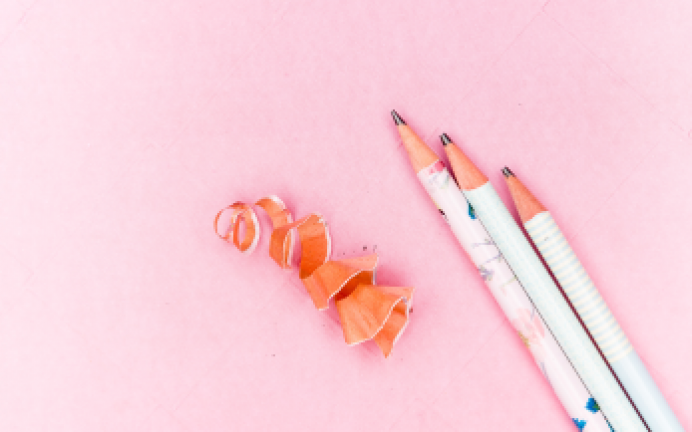מילות מפתח: ריפוי בעיסוק, ביגוד, תפיסה עצמית, מסוגלות, תפקודים ניהוליים
תקציר
מחקרים מראים שלמראה חיצוני וללבוש השפעה רבה על תפיסתנו את הסובבים אותנו וכן על תפיסת העצמי ותפיסת המסוגלות שלנו. יותר מזה, נמצא ששימוש נכון בביגוד יכול להעצים ולחזק קבלה והערכה עצמית בקרב אנשים שמתמודדים עם הערכה עצמית נמוכה. המקרה שלפנינו בוחן את הטענות האלה בהקשר של התמודדות עם מוגבלות, ובאופן ספציפי עם פגיעת ראש טראומטית (TBI). תיאור המקרה סוקר את ההתמודדות של נועה (שם בדוי), בחורה בת 30, סטודנטית לחינוך מיוחד, שסובלת מ-TBI בעקבות תאונת דרכים. בשל הפגיעה החלה נועה לחוות קשיים קוגניטיביים ורגשיים סביב תהליך הלבוש וסביב יכולתה לבטא את זהותה וסגנונה האישי דרך לבוש. המאמר מתאר התערבות בריפוי בעיסוק שנקבעה לה מטרה תפקודית של שיפור ההתארגנות בבוקר ומטרה תפיסתית-רגשית של פיתוח יכולת לביטוי עצמי אותנטי ועדכני דרך לבוש. בסיום תהליך ההתערבות דיווחה נועה שאכן זמן ההתארגנות ביציאה מן הבית התקצר, האיחורים פחתו, ותחושת המסוגלות העצמית שלה התחזקה בשל הגדרה מחדש של סגנון אישי בלבוש, מהלך שהניב גם משובים חיוביים מן הסובבים אותה. לאחר שסיימה את תקופת השיקום היא חזרה להשלים את לימודיה האקדמיים בחינוך מיוחד והאיצה את השתלבותה מחדש בקהילה. תיאור המקרה ממחיש את החשיבות שיש לתהליך התערבות בתחום הלבוש והסגנון האישי במסגרת ההתערבות בריפוי בעיסוק, ואת ההשפעה שיש לכך על ההשתתפות בעיסוקים משמעותיים לאדם.
תודות
תודתנו נתונה לאריאל דניאלס על עזרה בכתיבת המאמר.
Abstract
Research shows that appearance and clothing have a significant impact on the perception of the people around us and our self-perception and self-efficacy. Beyond this, it has been found that intentional use of clothing can empower and strengthen emotions of acceptance of self-appreciation among people that are dealing with low self-esteem. The case study below examines these assertions in the context of individuals coping with disabilities, and specifically with traumatic brain injury (TBI). It also details the struggles of a 30-year-old woman, a special education student, who suffers from TBI due to a traffic accident. Due to her injury, she experienced cognitive and emotional difficulties when dressing.. These difficulties translated into a lengthy morning routine, causing her to arrive late to different appointments. Another expression of her challenges was her feeling a discrepancy between the way she wanted to present herself and how she dressed. She reported that this gap undermined her sense of self-efficacy and made it more difficult for her to externalize her current identity and apparel preferences. The intervention process in occupational therapy focused on the functional goal of shortening the time of her morning organization routine and the perceptual-emotional goal of developing authentic self-expression through clothing. The intervention process included providing practical tools for organizing her wardrobe in an accessible way, learning strategies for selecting clothes in the morning, establishing a personal clothing style, and acquiring a strategy for purchasing clothes effectively. At the end of the intervention process, the patient reported that her morning routine became more efficient, leading to fewer late arrivals to her appointments. In addition, her sense of self-efficacy increased due to the new clothing style she had developed for herself, a step that yielded favorable feedback from her immediate environment as well. Around that time, she also returned to her studies, which accelerated her re-integration into the community. This case study illustrates the importance of interventions in the realm of clothing and personal styling within the framework of occupational therapy interventions. This patient's achievements following the intervention also emphasize the impact of such methods on patients with brain injury and their participation in meaningful activities.
Acknowledgment
We are thankful to Ariel Daniels for his contribution to this article, above and beyond his proofreading and language editing services.
מסר עיקרי
- למראה חיצוני וללבוש השפעה רבה על תפיסת העצמי ותפיסת המסוגלות העצמית של אנשים שסובלים ממוגבלות.
- טענה זו מודגמת בתיאור המקרה של מטופלת שחוותה פגיעת ראש טראומטית, אירוע שפגע, בין השאר, בכישורים ובמיומנויות בתחום הלבוש.
- התערבות בתחום הלבוש והסטיילינג חיזקה את הדימוי העצמי שלה וסייעה לה בהשתלבות מחדש במסלול חייה טרם הפגיעה.
https://doi.org/10.55134/5pto7jo6
